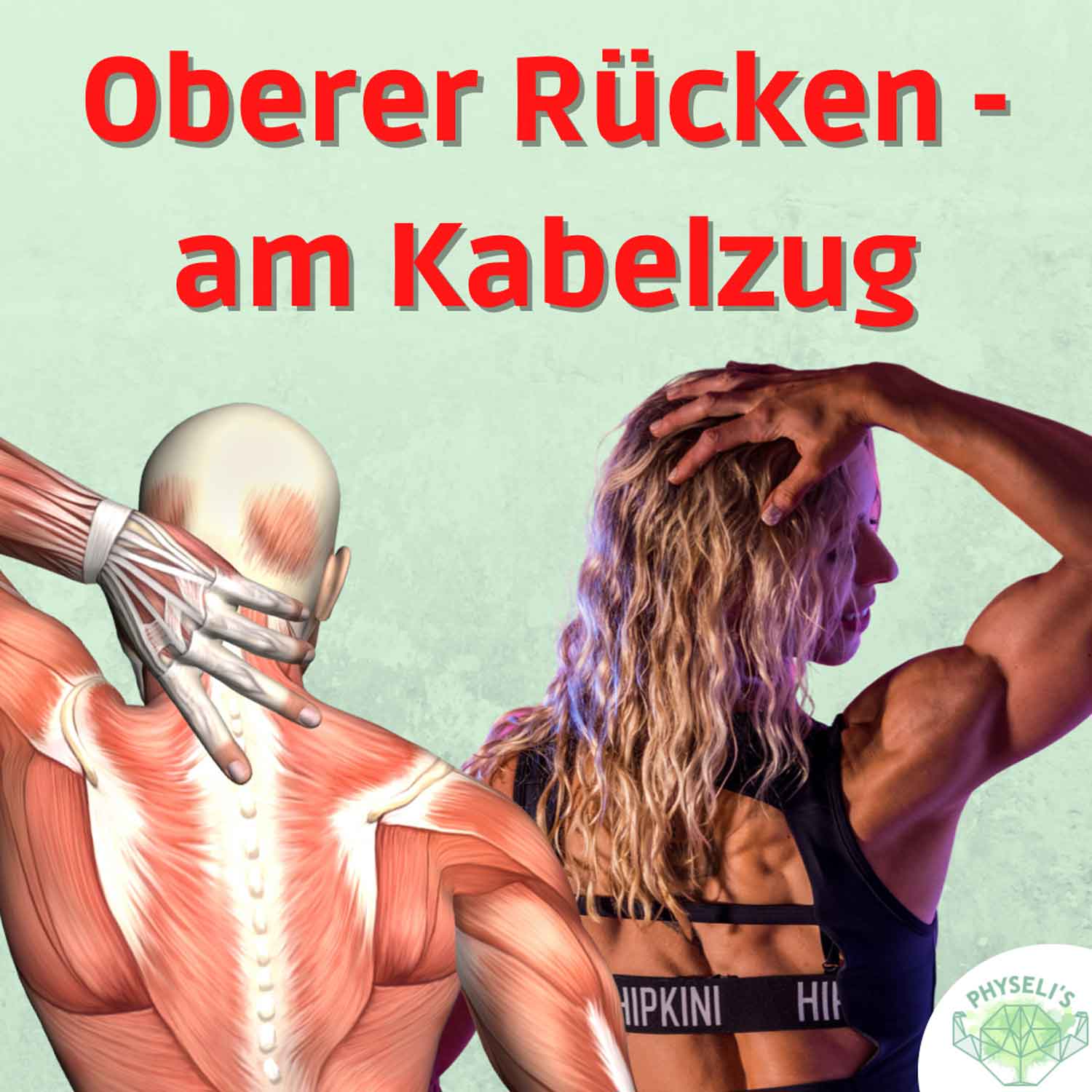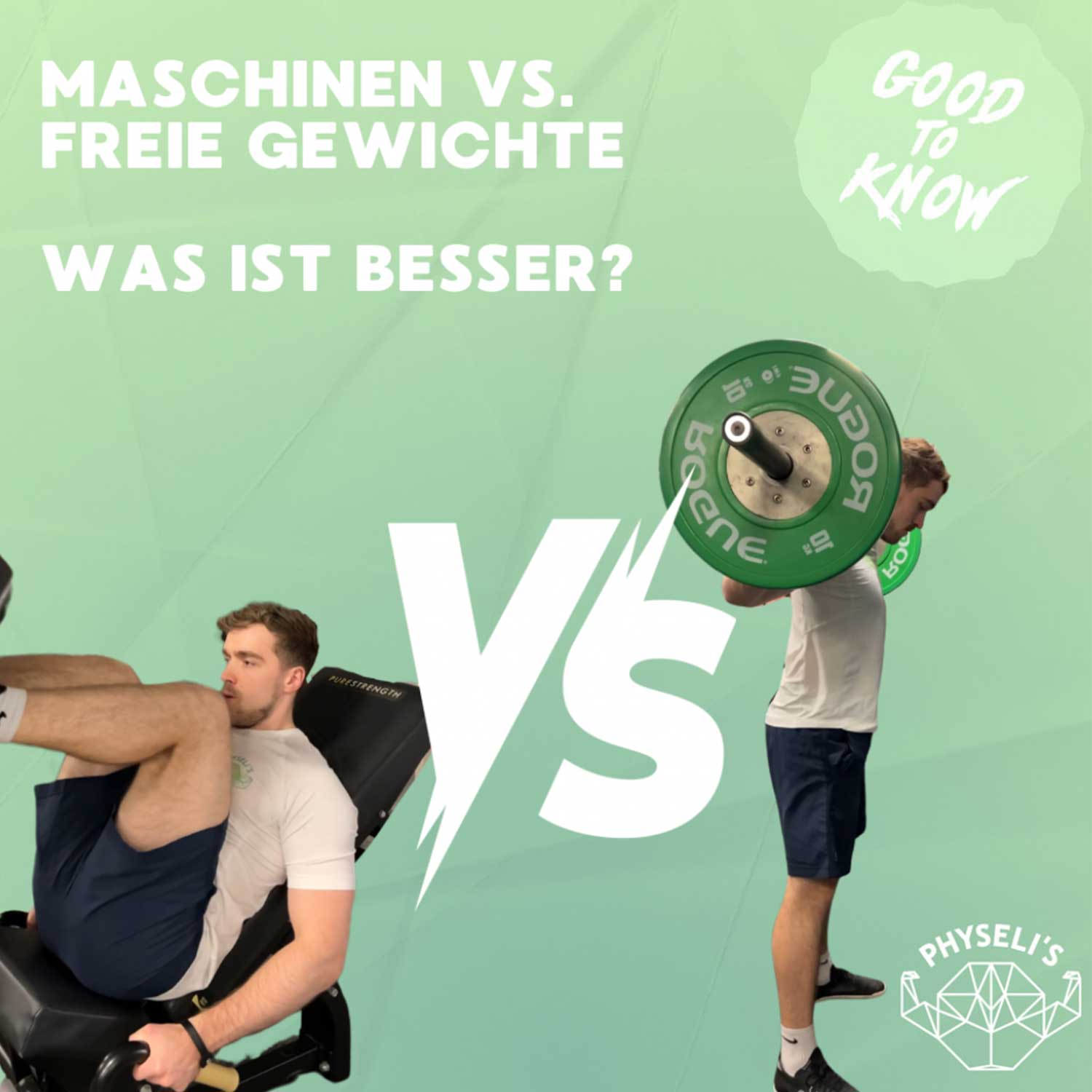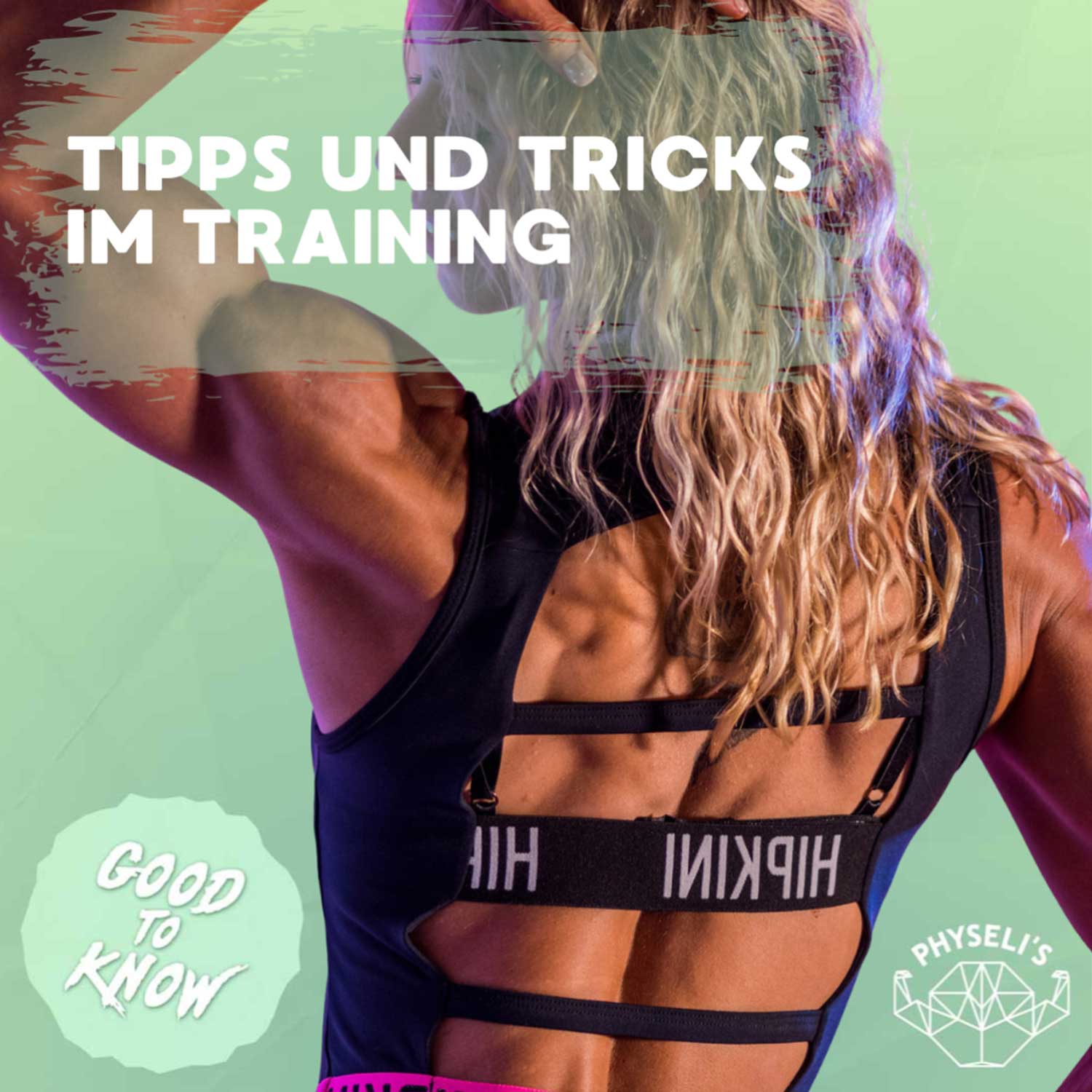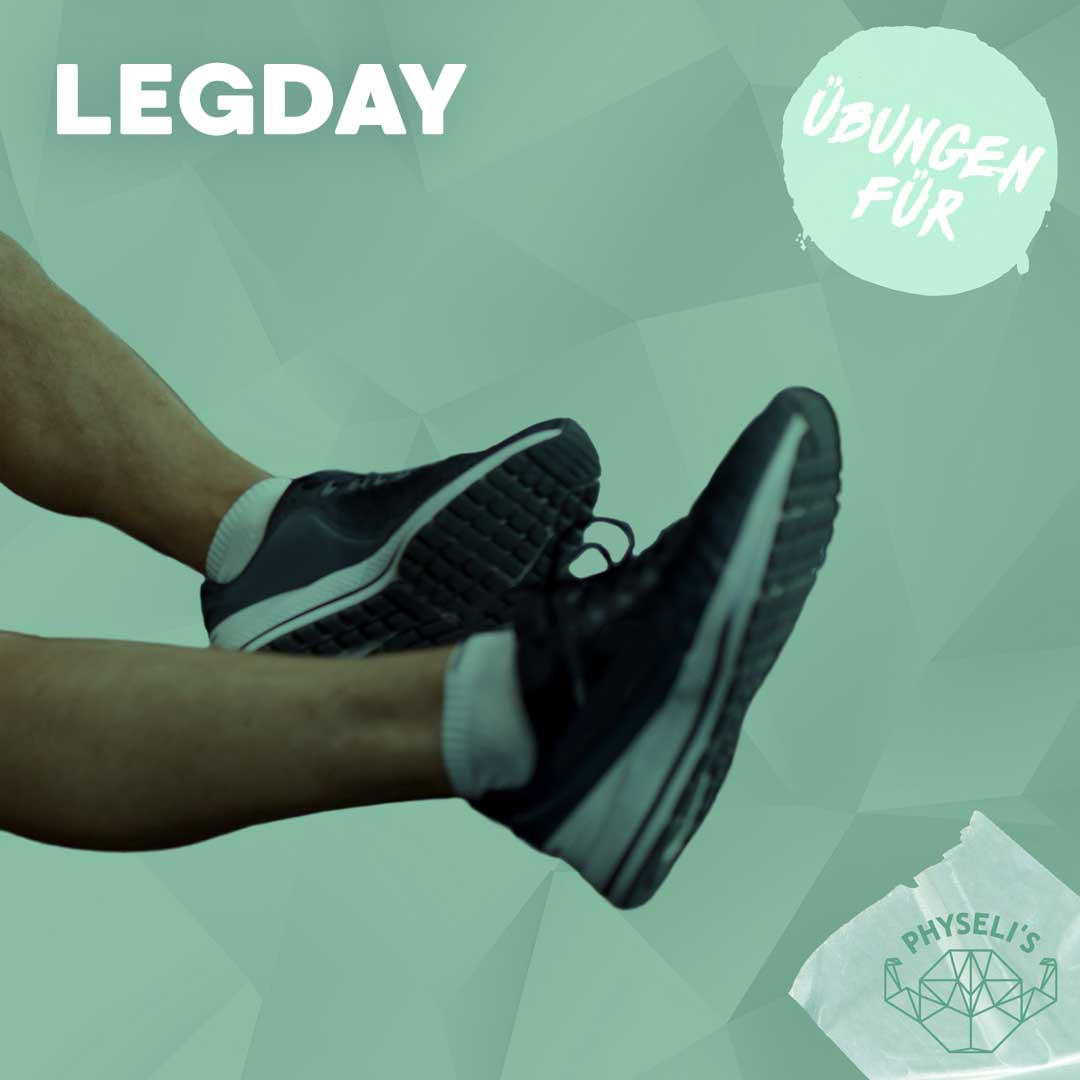To train the muscles between the shoulder blades effectively, it is advisable to move the shoulder blades fully forwards and backwards, i.e. in protraction and retraction.
A major advantage of using machines, such as various rowing machines, is that the upper body is stabilized, which enables isolated training of the upper back.
With the cable pulley, on the other hand, you benefit from being able to individually adjust the cable height, grip type and grip width. We take a closer look at these aspects in this article.
Which muscles are we talking about here?
This article focuses on the muscles of the upper back and the back of the shoulders, which are particularly intensively used and trained in this variant of cable rowing.
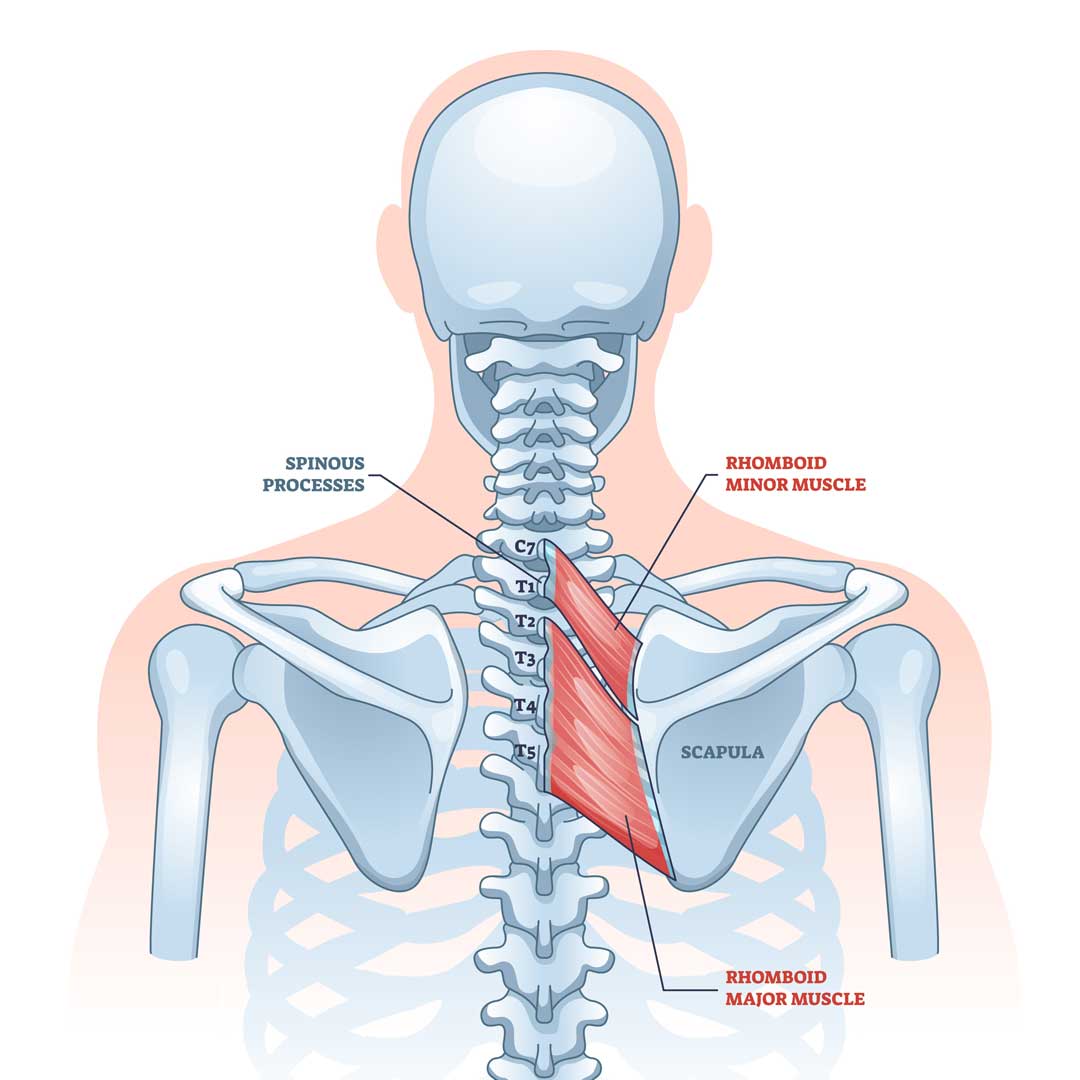
The muscles that pull the shoulder blades backwards towards the spine:
The rhomboids, i.e. the greater and lesser rhomboids, are muscles that extend from the lower cervical and upper thoracic spine to the inner edge of the shoulder blades. When you tense up, you not only move your shoulder blades backwards, but also slightly upwards. Directly above the rhomboids is the trapezius muscle, which is divided into three parts and originates from the back of the head and the cervical and thoracic spine.
These parts are attached to the collarbone or shoulder blade. In particular, the middle part of the trapezius muscle, the pars transversa, with its horizontally running muscle fibers, has the task of pulling the shoulder blades backwards towards the spine – very similar to the rhomboids.
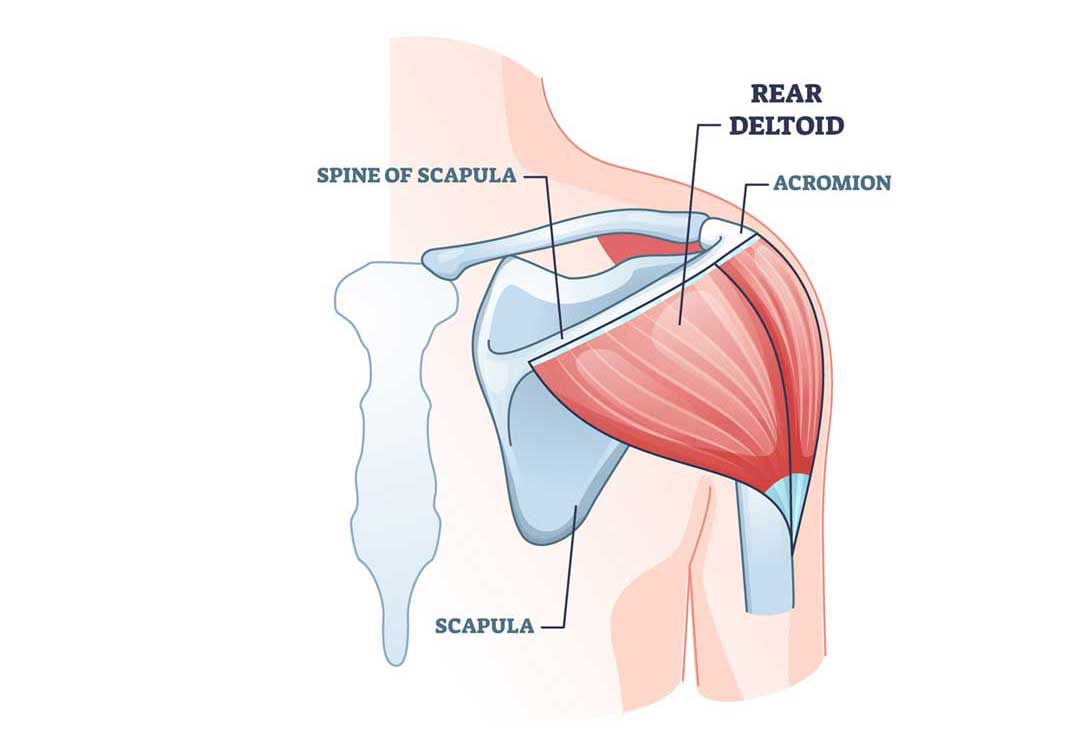
The muscles that move the outstretched arm backwards:
The posterior region of the deltoid muscle, which stretches from the upper region of the shoulder blade to the humerus, plays a special role. It has the task of pulling the upper arm backwards and at the same time allowing a slight outward rotation.
In addition, the horizontally aligned fibers of the latissimus dorsi, often simply referred to as the lat, are also actively involved in moving the arm back. This muscle group harmoniously supports the movement and increases the force when the arm is pulled back.
Cable height
If you choose the cable from a position slightly above shoulder height, you effectively train the lower part of the trapezius muscle. This happens because you not only pull your shoulder blades backwards, but also downwards. However, if the cable position is below the shoulders, the effect is reversed: you move the shoulder blades backwards and upwards, which primarily challenges the upper part of the trapezius muscle, i.e. the neck area. If you do not want to train your neck, it is advisable to set the cable slightly above shoulder height, as shown in this video.
Handle and handle width
For exercises with bars or fixed grips, the grip width determines the angle between the upper arm and the torso. Training with a rope is different: here you have the flexibility to vary the angle. A big advantage of the rope is that you can move your arms further back and closer to your body. This is particularly beneficial if you are aiming to maximally contract the shoulder blades and thus achieve intensive muscle work in the back area.
Angle between upper arm and torso
A greater angle between the upper arm and the torso, as shown in the video, will help you to pull your shoulder blades together as much as possible. This movement is particularly important if you want to train your upper back specifically. Contracting the shoulder blades is a key aspect of effective back training and helps you to intensively strengthen and shape the muscles in the upper back.
